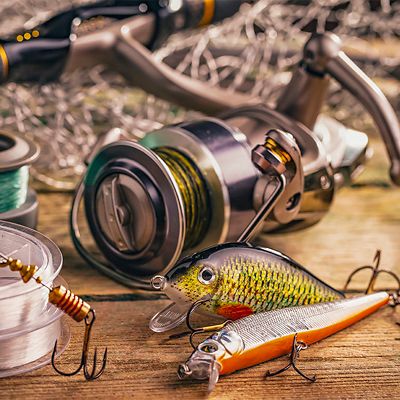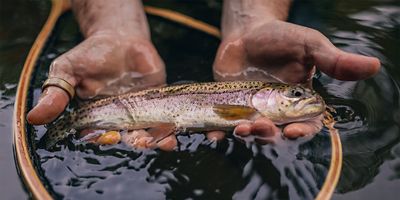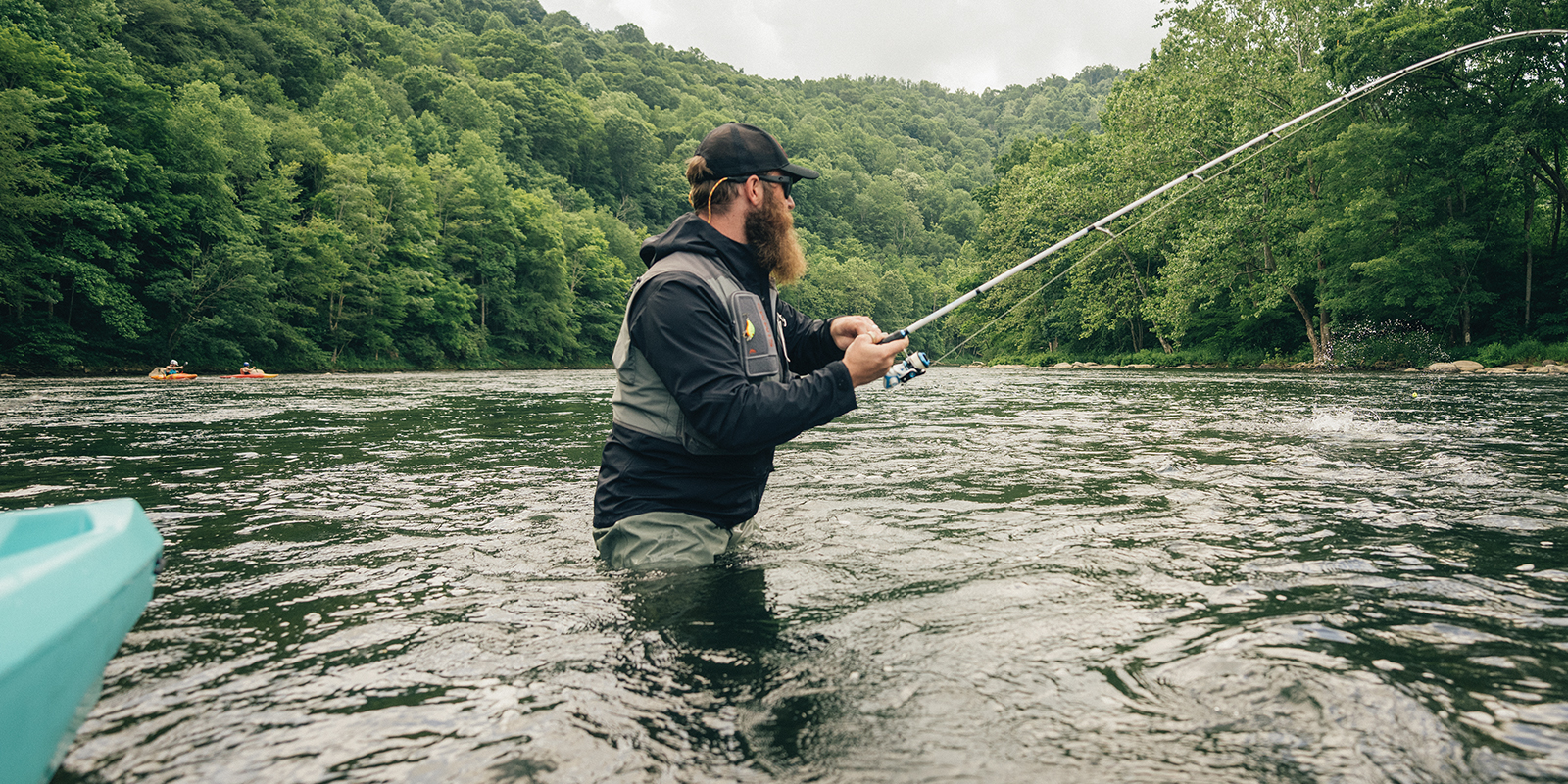With a little extra gear and know-how, you can take to the lake all year. Ice fishing is relaxing, fun, and an excellent way to enjoy the great outdoors in the quiet season. Getting started can be a little intimidating, though. Not only are you fighting the fish, you’re also fighting thick ice and cold weather. The ice fishing essentials outlined below will help you get out and start getting bites.
Gear to Get Through the Ice
Before you start pulling fish out of the ice, you're going to need to get through it.
Auger
An auger is a large drill that puts a hole in the ice. You have two choices here: a hand auger or a powered auger.
A hand auger has two handholds slightly off-axis, which allow you to crank-spin the auger through the ice. They’re cheap with many available for under $100, easy to use, and durable. Downside: Augering a hole by hand requires a decent amount of physical effort, especially in thick ice. Hand augers come in sizes ranging from 4 to 10 inches. Most beginners can get away with a 4-inch auger (smaller hand augers are easier to use than large ones). But remember, the fish has to fit through the hole, too, so if you’re looking for larger fish, make sure you have a larger auger.
Powered augers run on gas or propane, work through the ice quickly with little effort, and allow for bigger holes. These tools are heavier than their hand counterparts, often weighing around 30 pounds, so it will take more work to get them out on the ice. They’re more expensive as well, with many costing hundreds of dollars, and will need to be serviced over the course of a few seasons.
Ice Skimmer
As you fish through the ice, the water near the top will want to refreeze. To be sure that your hole doesn't reclose, use an ice skimmer or scoop to pull out the freezing slush. These often look like ladles with holes in the bottom to gather the chunks but let the water through.
Gear to Catch the Fish
Getting through the ice is only half the battle. Now, you’ll need gear to get the fish.
Rod and Reel
If you are just getting started ice fishing, the rod and reel you already have will likely work. Just put your line through your hole in the ice and start fishing. Use a 2- to 4-pound line for smaller fish and a 6- to 8-pound line for larger, predatory, fish.
You can also use small jigging rods. These shorter rods made for ice fishing have a simple spinning reel. Rather than casting, you lower your line into your hole and wait for a nibble to start reeling in.
Tip-Ups
Upgrade your setup with tip-ups. Tip-ups consist of a spool of line that sits over the hole and dangles in the water. When a fish takes your bait, a mechanical device shoots a flag up, or “tips” it up, to let you know there’s a fish on the line.
Once your tip-up triggers, grab the line itself, feel for the fish, give a sharp yank to set the hook, and then pull in the line, hand over hand, to “reel” in the fish. Experienced ice fishermen will fish multiple tip-ups at the same time.
Bait
Many ice fishermen swear by live bait, especially minnows. If you don't like live bait, look for lures that best approximate live bait, like small plastics with swim tails that you can jiggle up and down to create interest.





